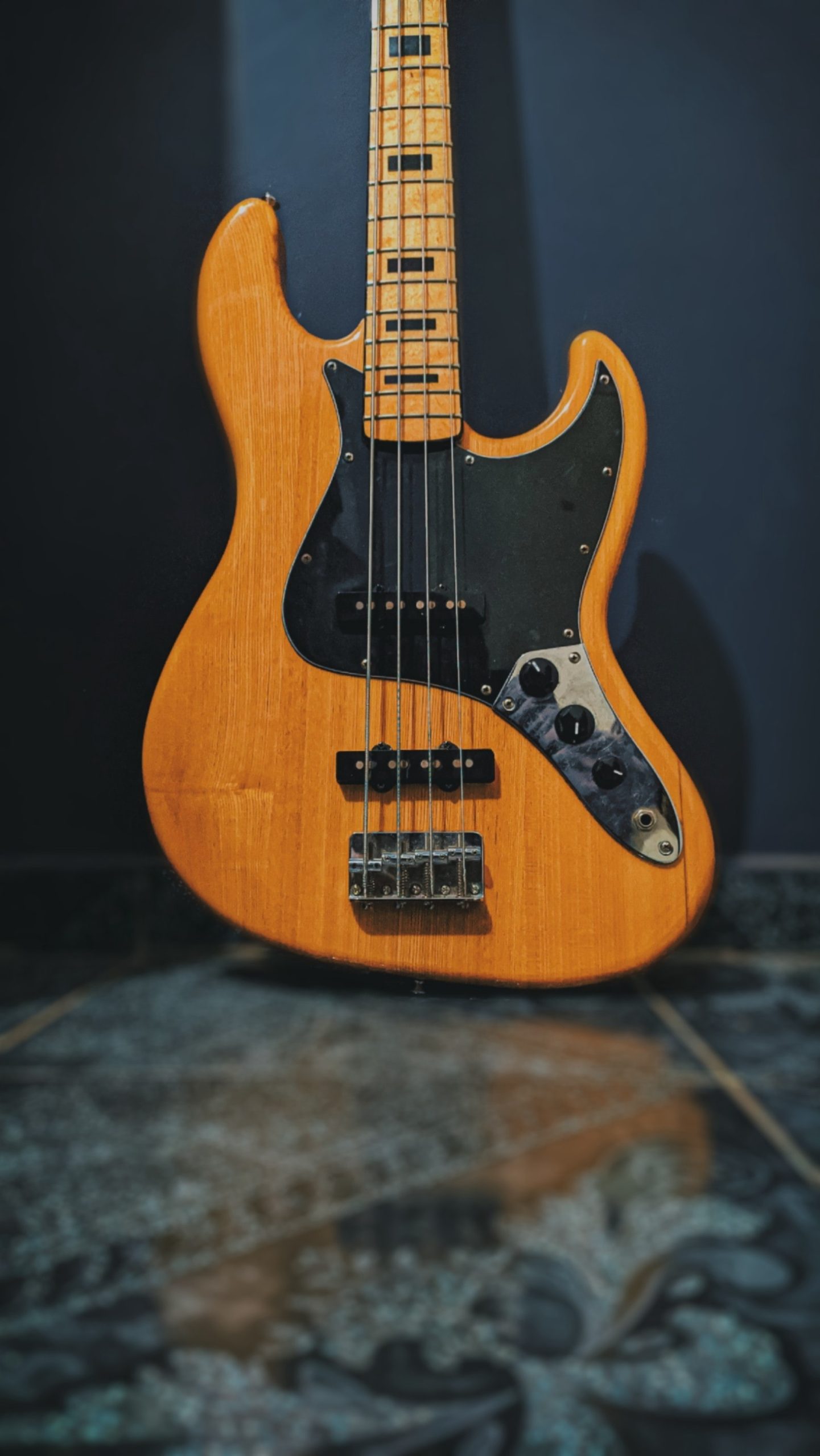Learning how to play the bass guitar can be a fun and challenging experience. Bass players need to have a strong foundation in technique in order to create fluid, seamless lines with their instrument.
In this blog post, we will discuss six bass guitar technique exercises that will help you play like a pro!
These exercises are designed to improve your dexterity, timing and accuracy on the bass guitar. We’ve also included video lessons and a downloadable bass guitar finger exercises PDF so you can practice them at home!
Benefits of playing
Practicing the bass guitar on a regular basis is a great way to keep your hands in shape. It enables you to develop the muscles needed to play the instrument, as well as improve your dexterity and accuracy.
Furthermore, regular practice helps you to become more comfortable with the fingerings of the various chords and scales. As a result, you will be able to play with greater speed and precision.
In addition, regular practice also allows you to track your progress and identify areas that need improvement.
By setting aside time each day to practice, you can ensure that you are making steady progress towards becoming a better bass player.
Want free guitar tips and video lessons delivered to your inbox?
Fill out your details in the box below for a free “how to use scales in your bass playing” video course complete with PDF’s, 5 video lessons and much more!
Ascending Exercise
One of the best ways to improve your bass guitar playing techniques and knowledge of a scale is by playing it in ascending groups such as threes or fours.
This allows you to gradually increase the speed and difficulty of the scale as you go along. By the time you reach the top of the scale, you will have developed a strong understanding of the fingering and timing.
This will help you to play the scale more fluently and accurately. In addition, this exercise also develops your endurance and stamina.
So if you are looking for a way to improve your technique, be sure to give this method a try.
What if this exercise is too hard?
Many beginning bass guitar students find themselves overwhelmed when they encounter a new exercise that is too difficult to complete.
Rather than practicing slowly, they try to play the exercise as fast as possible, only to find that they make more mistakes and don’t improve.
The key to successfully breaking down a difficult exercise is to practice it slowly at first. This will allow you to focus on each individual note and ensure that you are playing it correctly.
Once you have mastered the exercise at a slow tempo, you can gradually increase the speed until you can play it at the desired tempo.
By taking the time to practice slowly, you will be able to learn complicated exercises more quickly and effectively.
The major scale
When learning how to play the bass guitar, one of the best ways to become familiar with the neck and increase your technical fluency is to learn the major scale in all seven positions.
This means playing the scale starting on each note of the major scale, moving up the neck one position at a time.
For example, if you are playing a C major scale, you would start on the C note at the first fret of the low E string, then play the scale up to the C note at the third fret of the A string.
You would then move up to the next position, starting on the D note at the third fret of the A string.
This process is repeated until you have played the scale in all seven positions.
Not only does this help you to learn the neck, but it also increases your technical fluency as you have to navigate different fingering patterns in each position.
Additionally, it can be helpful to practice changing positions quickly so that you can seamlessly integrate them into your playing.
Finger combinations
As a bass player, developing finger strength and independence is essential for playing with precision and power. One great way to achieve this is by practicing unusual finger combinations.
The classic “1,2,3,4” exercise is a great way to do this. In this exercise, each finger on the fretting hand is numbered 1,2,3 or 4. Then, you play through all permutations of those finger combinations.
This exercise not only helps to develop finger strength and independence, but it also helps to build coordination and stamina.
As you become more proficient at the exercise, you can increase the tempo and play more complex patterns.
With regular practice, you’ll notice a significant improvement in your playing.
Cycle of Fourths
If you’re just starting out on the bass guitar, or if you’ve been playing for a while but feel like you’re stuck in a rut, then one simple exercise that can really help you is to take a phrase or melody and move it around the cycle of fourths.
This means playing the same thing starting on each successive note in the scale, so if you’re in the key of C, you would start on C, then move to F, then Bb, then Eb, and so on.
Not only does this help you to learn where all the notes are on the neck of the bass, but it also forces you to think about how the harmony changes as you move to different tonal centers.
And once you get comfortable with moving around the cycle of fourths, you can start to experiment with other intervals as well.
So give it a try next time you’re practicing, and see how it helps you to unlock the full potential of the bass guitar.
Simple rhythm practice
When you’re first starting out on bass guitar, it’s important to develop a strong, consistent and accurate plucking technique. It’s one of the most beneficial bass guitar exercises beginners can do.
One of the best ways to do this is to practice simple rhythms on a single string.
This will help you to get a feel for the timing and positioning of your plucking hand, and it will also help you to develop a clear and controlled plucking action.
As you become more confident and comfortable with the timing and feel of the rhythm, you can start to add in more strings and introduce more complexity into your playing.
But always remember to go back to basics every now and then, as this is the best way to maintain a strong foundation of technique.
Bouncing between strings
The act of passing from one string to another is known as string skipping. Famously, in his instructional video, Jaco Pastorius described this as one of the hardest things a bass player can do.
String skipping is a challenging technique for bass players because it requires a high degree of coordination between the plucking hand and the fretting hand.
In order to execute a string skip effectively, the plucking hand must maintain a consistent up-and-down motion whilst also moving across to the next string. This can be difficult to achieve, particularly for beginner bass players.
One way to overcome this challenge is to practice exercises that promote good posture and movement in the plucking hand.
These exercises help to develop the coordination and muscle memory required for string skipping. In addition, they can also help to improve your overall technique and tone.
Position Shifting
As any bass player knows, shifting positions on the neck of the bass is essential for playing complex passages.
There are a variety of ways to shift positions, but the best way is to expand your fretting hand from the centre as you move from one position and then compress it again as you arrive in the new position.
This creates a highly effective play, expand, move, play and compress sequence of motions that enables you to shift positions effectively.
Try it yourself and you’ll see how much easier it is to play complex passages with this method.
Descending Exercise
Playing a descending scale in descending groups such as descending one octave, then from the 7th to the root, then from the 6th to the root and so on, is a great technical challenge and a more fun way to learn scales.
This type of playing forces you to use your pinky finger more, which is great for building up finger strength.
It also allows you to focus on each note more since you’re not just playing up and down the scale. Try it with different types of scales and see how it feels!
FAQ’s
How do I improve my finger dexterity for bass?
The best way to do this is with slow practice that focuses on accuracy, good movement, and control of your fretting hand. Developing dexterity isn’t about playing the right notes as such. It’s much more about making sure you’re playing notes in the right, controlled way.
What should a beginner bassist practice?
As a beginner bassist, there are a few things you should focus on practicing. First, it’s important to get comfortable with the basic patterns and rhythms used in most styles of music.
Start by practicing simple quarter note patterns, then move on to eighth notes, triplets, and sixteenth notes. Once you have a solid understanding of the basic rhythms, you can begin to add in more complex syncopations and fills.
Additionally, it’s important to develop a good sense of pitch and timing. Playing along with a metronome or drum machine can help you develop a steady beat, while working on your ear training will improve your ability to play in tune.
Lastly, don’t forget to practice your Technique!
Sloppy technique will only make it harder to play accurately and cleanly, so make sure you’re taking the time to practice hand and finger exercises. With regular practice, you’ll be able to master the basics of bass playing in no time.
Can I teach myself the bass?
Technically, yes. However, you won’t get the valuable feedback that you would get from an in-person teacher and this feedback is often the key to making progress.


Leave a Reply